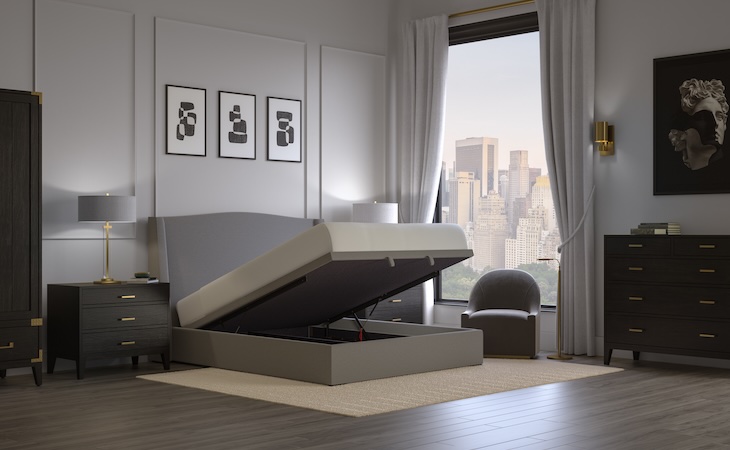Everybody knows the most important part of the bedroom is the bed. But how do you extend the warmth and coziness of your mattress and bedding to the rest of the room? Curtains, for one!
The right curtains can make or break a bedroom. They add to the look of your bedroom, sure, but they also help filter out light so you can fall asleep easily, especially in the summer when nights are short.
There’s a lot to consider when choosing and installing bedroom curtains. To help you through the decision process, we asked Houston-based interior designer Bilal Rehman for his top tips on materials, styles, colors, and hardware.
This guide will explain everything you need to know about choosing bedroom curtains.
How to choose bedroom curtains
Curtains are available in various materials, patterns, finishings, and sizes. Remember, your bedroom is, first and foremost, a place to relax and sleep. Keep that in mind as you craft your personal bedroom style.
Bedroom curtain materials
What’s the most popular off-the-rack bedroom curtain material today? Linen, Rehman says. But he’s not exactly head over heels for this bedroom mainstay.
“I know they collect tons of dust and are difficult to clean,” he explains. “Linen curtains also play Switzerland—they block some light but not enough for a midday nap.”
If you want an elevated aesthetic with blackout curtain functionality, then Rehman suggests giving velvet a whirl. Blackout velvet curtains hung from floor to ceiling feel luxurious and cozy at the same time.
“For those who enjoy waking up to natural sunlight, I highly recommend sheer curtains,” says Rehman. “The thin material allows all the natural daylight to soak into your room and acts more as a privacy buffer than anything else.” Voile (French for veil) is a sheer fabric typically made from cotton.
Bedroom curtain styles
“In the last five years, curtain styles have shifted from intricate and heavily pleated designs,” Rehman says. These days, he says, people prefer lighter, airer styles.
Ultimately, that might mean choosing a curtain that naturally gathers when moved rather than one with pinch pleats or box pleats.
Of course, curtain style is about more than the structure of the fabric. Solid-colored curtains have been in style for decades—they’re classic and chic—but Rehman says there’s no reason to fear patterns and textures.
Big, bold patterns make a statement just like wall art. Textured fabric, on the other hand, can offer a hint of pattern while still blending into the room’s color scheme.
Bedroom curtain colors
“I love creating a seamless look by having curtains blend with the walls in a monochromatic fashion,” Rehman says. “This technique not only makes a space feel larger but also eliminates visual interruptions when scanning the area.”
If you prefer more contrast, then go all in with a curtain color that will balance the wall color. As an example, Rehman describes the balancing and lightening effects of a soft cream velvet curtain in a rich oxblood bedroom.
In a room with light neutral walls, on the other hand, consider curtains in jewel-box blues or greens—both colors that promote sleep, according to science.
Bedroom curtain rods and hardware
First things first: Pick a curtain rod that’s thick and sturdy enough to remain straight when holding the weight of the fabric.
As for aesthetics, Rehman says there’s been a shift away from traditional rods and hardware in favor of minimalist track systems. Curtain track systems or simple, minimalist rods and hardware have a classic aesthetic.
Finally, you can’t go wrong with rods and hardware that are the same color as the walls or curtains so that they disappear seamlessly into the space.
FAQs
What curtains look best in the bedroom?
There’s no single perfect bedroom curtain style. The best curtains for your bedroom are functional (blackout if you prefer sleeping in a dark room or sheer if you like waking up with the sun) and complement the other aesthetics of the space, such as wall color and bed covering.
How do I choose a curtain color for my bedroom?
If you’re struggling to choose a bedroom curtain color, then consider matching your curtains to your walls. Monochrome looks trick the eye into thinking the space is bigger.
Should curtains be lighter or darker than walls?
There’s no hard and fast rule about whether bedroom curtains should be lighter or darker than the walls. Rehman suggests matching the wall color or going for a major contrast.
Want to transform your bedroom into a cozy, inviting space? Check out our guide to how to add texture to your bedroom so you can do just that.




